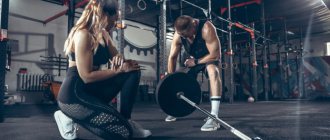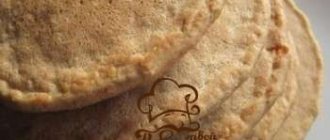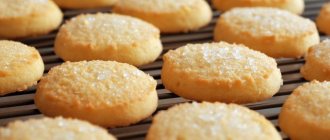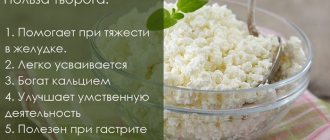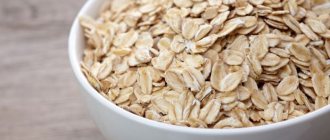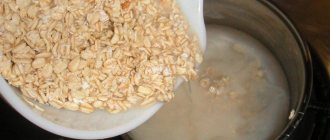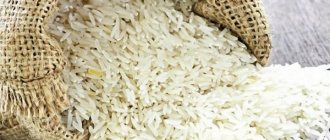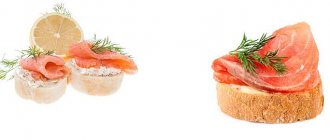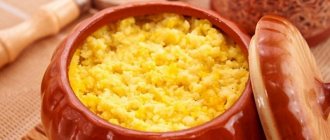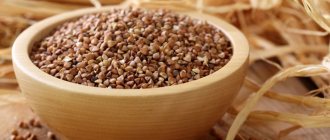The benefits and harms of the dish
Pancakes with milk (their calorie content is described below in the article) are prepared with a large amount of flour. As a result, this dish saturates the body with fiber. Together with dietary fiber, they are needed for maximum absorption of beneficial elements from any product. To increase the amount of fiber, you can add oatmeal to the dough.
If vegetable oil with a large amount of unsaturated fatty acids is added to the pancakes, which help the body absorb fats, they have a positive effect on the functioning of the cardiovascular system, strengthen blood vessels and increase their elasticity. The dish contains many vitamins and minerals. It is especially worth highlighting vitamins of group B, PP, E. And from minerals: potassium, magnesium, iron, phosphorus.
Composition and nutritional value
If pancakes are prepared according to the classic recipe with milk, their calorie content is approximately 170 kcal per 100 g. This figure is relevant for treats without sauces and additives.
The BZHU of such a dish turns out to be:
| BJU | Value in g (per 100 g) |
| Squirrels | 5,6 |
| Fats | 6,7 |
| Carbohydrates | 15,9 |
The calorie content of one standard pancake without additives is approximately 22 kcal. If it is served with butter, then the figure can increase to 86-90 kcal per 1 piece. It all depends on the amount of supplement and its fat content.
The final calorie content and nutritional value of the treat can vary significantly. It depends on the fat content of the milk, the amount of flour in the recipe, the frying method - whether oil was used and in what portion. The indicators will also depend on the additives. For example, if cocoa, chocolate, dried fruits are used, which are sent directly into the dough.
How to make low calorie pancakes
If the calorie content of classic pancakes turns out to be unacceptable for your diet, use these tips to help make the main dish of Maslenitsa lighter.
- Avoid vegetable oil during cooking and use a non-stick frying pan for convenience.
- Pancakes made with mineral water or boiling water have fewer calories than products made with milk. Take this factor into account. Alternatively, you can prepare the dough with milk, but with the addition of water - such recipes also exist.
- Try experimenting with flour: use rice, corn or buckwheat instead of wheat.
- Make the pancakes as thin as possible - psychologically it will be more difficult for you to eat more pancakes than you ate before, although the weight of one pancake will decrease.
- Instead of a classic sweetener, use honey or a sweetener.
- Each pancake should not be greased with butter; alternate at least one after another.
- As a filling, use products with the lowest calorie content, such as minced chicken or lightly salted salmon. In addition, these products do not contain sugar.
To make the fun week of Maslenitsa pass without harming your figure, use our tips for making low-calorie pancakes or simply reduce the portion of the classic treat with milk, butter and tasty additives!
How to reduce calories?
Pancakes made with milk, which are quite high in calories, can be made less harmful to your figure.
There are several tricks for this:
- milk can be diluted with water;
- it is worth regulating the fat content of the main ingredient - the dairy product (it should be minimal, but fatty homemade products will not work);
- You should fry pancakes in a dry frying pan (you can coat it not with oil, but with a cut of fresh onion);
- It is worth serving ready-made treats with low-calorie additives - low-fat unsweetened yogurt, fresh fruits, berries or purees from them.
Calorie content of pancakes
Pancakes have a fairly high calorie content, which is why many people believe that pancakes are a rather harmful product. In fact, the use of natural ingredients makes it a nutritious and healthy dish for the body.
The calorie content of pancakes per 100 g is 320 kcal. Fat content - 12 g, protein - 6.0 g, carbohydrates - 25 g. This is when used in the preparation of flour, eggs and milk. But many people add sugar, salt, vegetable or animal fat and other ingredients to these products. As a dietary option, you can use only flour and water.
Thin pancakes with milk
Among the huge variety of pancakes, very thin, almost lacy pancakes made from yeast-free dough are traditionally especially popular among gourmets. They are often called “French” in contrast to traditional Russian ones, which are prepared with yeast and are quite dense.
To prepare fifteen pancakes with a diameter of 20-22 centimeters you will need: 0.5 liters of milk, three eggs, 200 g of flour, two tablespoons of butter (you can take either butter or refined vegetable oil, without a pronounced smell), the same amount of sugar and half a teaspoon of salt.
Please note that in order for the dough to be homogeneous, all ingredients must be at room temperature. Therefore, it is better to remove milk and eggs from the refrigerator in advance. If you use butter, you must first melt it and let it cool. Note that baked goods made with butter will be more rosy and will have a distinct creamy flavor.
Wash the eggs and break them into a prepared container. Add salt and sugar. Stir the mixture using a mixer, or just a whisk or fork. Please note that you do not need to beat the eggs into a foam, you just need to ensure that the salt and sugar are completely dissolved.
Pour about 150 ml of milk into the mixture. Mix thoroughly and sift the flour into the container with the future dough. Mix thoroughly again so that the dough is completely homogeneous, without a single lump. Then pour in the remaining milk and stir again. Add the butter and mix until the batter has the consistency of heavy cream.
It is better to grease the frying pan with oil only before pouring the dough for the first pancake onto it. However, if the pancakes stick, you should lubricate it every time before pouring the dough. Please note that it is better to use vegetable oil to lubricate the pan, because pancakes burn in sunflower oil.
In order for the baked goods to turn out not just thin, but truly openwork, with holes, the pan should be heated as much as possible.
Turn the pancake over when the top side is no longer sticky. A wooden spatula should be used for these manipulations.
Recipe for pancakes with milk and water. Calorie, chemical composition and nutritional value.
Nutritional value and chemical composition of “pancakes with milk and water.”
The table shows the nutritional content (calories, proteins, fats, carbohydrates, vitamins and minerals) per 100 grams of edible portion.
| Nutrient | Quantity | Norm** | % of the norm in 100 g | % of the norm in 100 kcal | 100% normal |
| Calorie content | 166.8 kcal | 1684 kcal | 9.9% | 5.9% | 1010 g |
| Squirrels | 5.5 g | 76 g | 7.2% | 4.3% | 1382 g |
| Fats | 3.7 g | 56 g | 6.6% | 4% | 1514 g |
| Carbohydrates | 27.8 g | 219 g | 12.7% | 7.6% | 788 g |
| Alimentary fiber | 1.4 g | 20 g | 7% | 4.2% | 1429 g |
| Water | 65.3 g | 2273 g | 2.9% | 1.7% | 3481 g |
| Ash | 0.462 g | ~ | |||
| Vitamins | |||||
| Vitamin A, RE | 17.9 mcg | 900 mcg | 2% | 1.2% | 5028 g |
| Retinol | 0.016 mg | ~ | |||
| beta carotene | 0.003 mg | 5 mg | 0.1% | 0.1% | 166667 g |
| Vitamin B1, thiamine | 0.072 mg | 1.5 mg | 4.8% | 2.9% | 2083 g |
| Vitamin B2, riboflavin | 0.069 mg | 1.8 mg | 3.8% | 2.3% | 2609 g |
| Vitamin B4, choline | 36.96 mg | 500 mg | 7.4% | 4.4% | 1353 g |
| Vitamin B5, pantothenic | 0.204 mg | 5 mg | 4.1% | 2.5% | 2451 g |
| Vitamin B6, pyridoxine | 0.08 mg | 2 mg | 4% | 2.4% | 2500 g |
| Vitamin B9, folates | 12.903 mcg | 400 mcg | 3.2% | 1.9% | 3100 g |
| Vitamin B12, cobalamin | 0.031 mcg | 3 mcg | 1% | 0.6% | 9677 g |
| Vitamin C, ascorbic acid | 0.07 mg | 90 mg | 0.1% | 0.1% | 128571 g |
| Vitamin D, calciferol | 0.132 mcg | 10 mcg | 1.3% | 0.8% | 7576 g |
| Vitamin E, alpha tocopherol, TE | 1.566 mg | 15 mg | 10.4% | 6.2% | 958 g |
| Vitamin H, biotin | 2.055 mcg | 50 mcg | 4.1% | 2.5% | 2433 g |
| Vitamin RR, NE | 1.5605 mg | 20 mg | 7.8% | 4.7% | 1282 g |
| Niacin | 0.513 mg | ~ | |||
| Macronutrients | |||||
| Potassium, K | 89.26 mg | 2500 mg | 3.6% | 2.2% | 2801 g |
| Calcium, Ca | 37.8 mg | 1000 mg | 3.8% | 2.3% | 2646 g |
| Silicon, Si | 1.683 mg | 30 mg | 5.6% | 3.4% | 1783 |
| Magnesium, Mg | 10.63 mg | 400 mg | 2.7% | 1.6% | 3763 g |
| Sodium, Na | 21.76 mg | 1300 mg | 1.7% | 1% | 5974 g |
| Sera, S | 40.02 mg | 1000 mg | 4% | 2.4% | 2499 g |
| Phosphorus, P | 65.8 mg | 800 mg | 8.2% | 4.9% | 1216 g |
| Chlorine, Cl | 41.83 mg | 2300 mg | 1.8% | 1.1% | 5498 g |
| Microelements | |||||
| Aluminium, Al | 12 mcg | ~ | |||
| Bor, B | 15.6 mcg | ~ | |||
| Vanadium, V | 37.86 mcg | ~ | |||
| Iron, Fe | 0.656 mg | 18 mg | 3.6% | 2.2% | 2744 g |
| Yod, I | 4 mcg | 150 mcg | 2.7% | 1.6% | 3750 g |
| Cobalt, Co | 1.49 mcg | 10 mcg | 14.9% | 8.9% | 671 g |
| Manganese, Mn | 0.2439 mg | 2 mg | 12.2% | 7.3% | 820 g |
| Copper, Cu | 53.67 mcg | 1000 mcg | 5.4% | 3.2% | 1863 |
| Molybdenum, Mo | 6.821 mcg | 70 mcg | 9.7% | 5.8% | 1026 g |
| Nickel, Ni | 0.925 mcg | ~ | |||
| Tin, Sn | 3.61 mcg | ~ | |||
| Selenium, Se | 4.669 mcg | 55 mcg | 8.5% | 5.1% | 1178 g |
| Strontium, Sr | 4.09 mcg | ~ | |||
| Fluorine, F | 47.32 mcg | 4000 mcg | 1.2% | 0.7% | 8453 g |
| Chromium, Cr | 1.65 mcg | 50 mcg | 3.3% | 2% | 3030 g |
| Zinc, Zn | 0.4615 mg | 12 mg | 3.8% | 2.3% | 2600 g |
| Digestible carbohydrates | |||||
| Starch and dextrins | 27.663 g | ~ | |||
| Mono- and disaccharides (sugars) | 1.8 g | max 100 g | |||
| Glucose (dextrose) | 0.008 g | ~ | |||
| Maltose | 0.021 g | ~ | |||
| Sucrose | 0.046 g | ~ | |||
| Fructose | 0.008 g | ~ | |||
| Essential amino acids | |||||
| Arginine* | 0.216 g | ~ | |||
| Valin | 0.244 g | ~ | |||
| Histidine* | 0.105 g | ~ | |||
| Isoleucine | 0.217 g | ~ | |||
| Leucine | 0.406 g | ~ | |||
| Lysine | 0.159 g | ~ | |||
| Methionine | 0.088 g | ~ | |||
| Methionine + Cysteine | 0.191 g | ~ | |||
| Threonine | 0.167 g | ~ | |||
| Tryptophan | 0.054 g | ~ | |||
| Phenylalanine | 0.249 g | ~ | |||
| Phenylalanine+Tyrosine | 0.383 g | ~ | |||
| Nonessential amino acids | |||||
| Alanin | 0.181 g | ~ | |||
| Aspartic acid | 0.217 g | ~ | |||
| Glycine | 0.172 g | ~ | |||
| Glutamic acid | 1.402 g | ~ | |||
| Proline | 0.432 g | ~ | |||
| Serin | 0.266 g | ~ | |||
| Tyrosine | 0.134 g | ~ | |||
| Cysteine | 0.102 g | ~ | |||
| Sterols (sterols) | |||||
| Cholesterol | 35.94 mg | max 300 mg | |||
| beta sitosterol | 12.5 mg | ~ | |||
| Saturated fatty acids | |||||
| Saturated fatty acids | 0.9 g | max 18.7 g | |||
| 14:0 Miristinovaya | 0.002 g | ~ | |||
| 15:0 Pentadecane | 0.001 g | ~ | |||
| 16:0 Palmitinaya | 0.305 g | ~ | |||
| 17:0 Margarine | 0.002 g | ~ | |||
| 18:0 Stearic | 0.141 g | ~ | |||
| 20:0 Arakhinovaya | 0.008 g | ~ | |||
| 22:0 Begenovaya | 0.014 g | ~ | |||
| Monounsaturated fatty acids | 0.831 g | min 16.8 g | 4.9% | 2.9% | |
| 16:1 Palmitoleic | 0.028 g | ~ | |||
| 17:1 Heptadecene | 0.001 g | ~ | |||
| 18:1 Oleic (omega-9) | 0.772 g | ~ | |||
| 20:1 Gadoleic (omega-9) | 0.002 g | ~ | |||
| Polyunsaturated fatty acids | 1.512 g | from 11.2 to 20.6 g | 13.5% | 8.1% | |
| 18:2 Linolevaya | 1.49 g | ~ | |||
| 18:3 Linolenic | 0.016 g | ~ | |||
| 20:4 Arachidonic | 0.006 g | ~ | |||
| Omega-6 fatty acids | 0.3 g | from 4.7 to 16.8 g | 6.4% | 3.8% |
The energy value of pancakes made with milk and water is 166.8 kcal.
Primary Source: Created in the application by the user. Read more.
** This table shows the average levels of vitamins and minerals for an adult. If you want to know the norms taking into account your gender, age and other factors, then use the “My Healthy Diet” application.
Pancakes on kefir with boiling water
Many housewives use kefir rather than milk to make pancakes. The pancakes end up being thin, porous, and they literally melt in your mouth.
You will need: kefir (400 l), boiling water (200 ml), two eggs, 250 g of flour, two tablespoons of sunflower oil, 75 g of sugar, half a teaspoon of soda and literally a pinch of salt.
Eggs should be thoroughly beaten with sugar and salt. Pour kefir into the same container, add pre-sifted flour and beat again.
Best materials of the month
- Coronaviruses: SARS-CoV-2 (COVID-19)
- Antibiotics for the prevention and treatment of COVID-19: how effective are they?
- The most common "office" diseases
- Does vodka kill coronavirus?
- How to stay alive on our roads?
Boil water, dissolve soda in it and begin pouring it into the dough in a thin stream, stirring constantly. After this, add a tablespoon of vegetable oil and let the dough sit for about five minutes.
Heat the pan well. Grease it with vegetable oil and start frying pancakes.
